Few fruits define American summers quite like watermelon. From backyard barbecues to 4th of July picnics, this iconic fruit embodies refreshment, sweetness, and fun. With its vibrant red or pink flesh, juicy texture, and signature green rind, watermelon is a staple in American kitchens, farmers’ markets, and home gardens.
Beyond its delicious taste, watermelon is packed with nutrients, antioxidants, and hydrating properties, making it a smart choice for health-conscious Americans. In this comprehensive guide, we’ll explore everything you need to know about watermelon — from varieties and health benefits to planting tips, storage advice, and creative recipes.
What Is Watermelon?
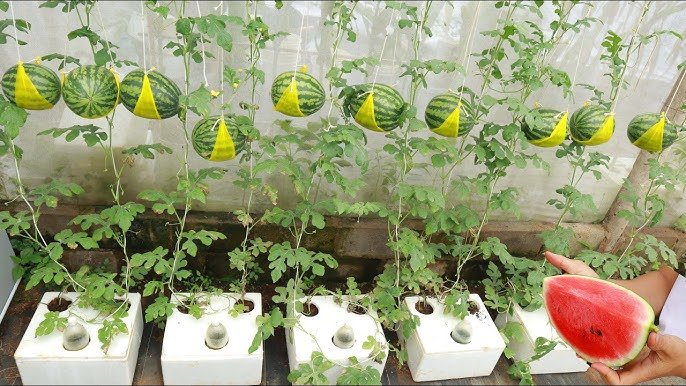
Watermelon (Citrullus lanatus) is a large, vine-growing fruit belonging to the Cucurbitaceae family, which also includes cucumbers, squash, and melons. Native to Africa, watermelon was brought to the Americas centuries ago and has since become a beloved summer staple across the United States.
Watermelons are typically known for their high water content — about 92% water — which makes them naturally hydrating and refreshing. They also contain sugars, fiber, and vitamins that make them both delicious and nutritious.
Nutritional Value of Watermelon
Watermelon is low in calories yet rich in essential nutrients. One cup (about 152 grams) of diced watermelon contains:
- Calories: 46
- Carbohydrates: 12 grams
- Protein: 1 gram
- Fat: 0.2 grams
- Fiber: 0.6 grams
- Vitamin C: 21% of the Daily Value (DV)
- Vitamin A: 18% of the DV
- Potassium: 5% of the DV
- Lycopene: 6,500 micrograms per cup
Lycopene, a powerful antioxidant also found in tomatoes, contributes to heart health, skin protection, and reduced risk of chronic diseases.
Health Benefits of Watermelon
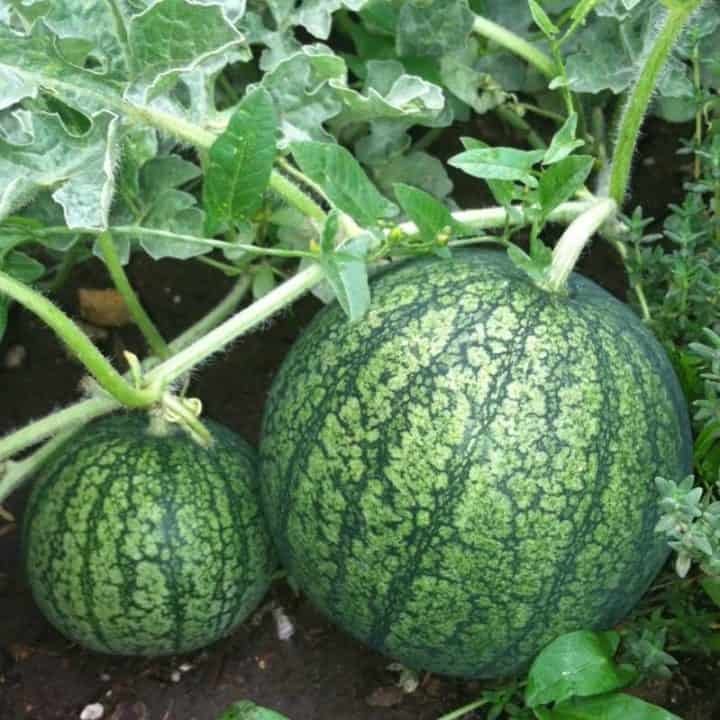
Watermelon is more than just a sweet treat — it’s a superfruit with multiple health benefits:
1. Hydration
With over 90% water content, watermelon is excellent for staying hydrated during hot summer months.
2. Heart Health
Lycopene, vitamin C, and potassium in watermelon support cardiovascular health by reducing blood pressure and improving cholesterol levels.
3. Digestive Health
Though low in fiber, watermelon contains water-rich compounds that aid digestion and promote regularity.
4. Anti-Inflammatory and Antioxidant Properties
Watermelon contains lycopene, cucurbitacin E, and vitamin C, which help combat oxidative stress and inflammation.
5. Skin and Eye Health
Vitamin A and beta-carotene in watermelon support healthy skin and vision, helping prevent dryness and age-related eye issues.
6. Exercise Recovery
Watermelon contains L-citrulline, an amino acid that may reduce muscle soreness after exercise, making it popular among fitness enthusiasts.
Popular Watermelon Varieties in America
Watermelon comes in a wide range of sizes, shapes, and colors, each suited for different American tastes:
1. Seedless Watermelon
- Sweet, crisp, and convenient without seeds.
- Perfect for fresh snacking and family gatherings.
2. Picnic Watermelon
- Large, traditional watermelon, often 15–25 pounds.
- Great for parties, barbecues, and outdoor events.
3. Icebox Watermelon
- Small, compact, and easy to store in a refrigerator.
- Weighs 5–15 pounds, ideal for smaller households.
4. Yellow/Orange Watermelon
- Yellow or orange flesh with a sweeter, honey-like flavor.
- Adds color variety to fruit salads and platters.
5. Crimson Sweet
- Classic striped green rind with bright red flesh.
- Popular at grocery stores and farmers’ markets nationwide.
How to Grow Watermelon in the U.S.
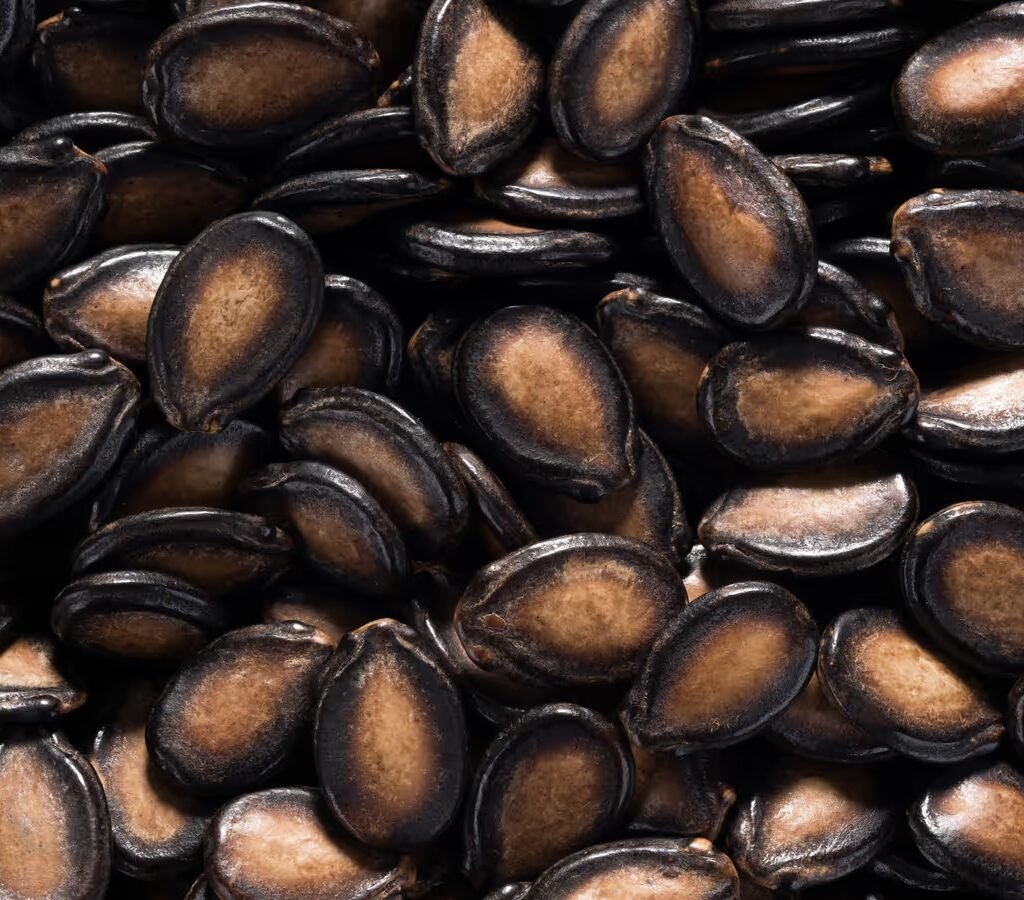
Watermelon thrives in warm climates and well-draining soil. Many Americans grow watermelon in home gardens during summer. Here’s how to cultivate this juicy fruit successfully:
1. Climate and Soil Requirements
- Prefers full sun and temperatures between 70–85°F.
- Requires well-drained, sandy or loamy soil enriched with organic matter.
- Ideal pH: 6.0–6.8.
2. Planting
- Start seeds indoors 3–4 weeks before the last frost or sow directly outdoors after frost.
- Space plants 3–5 feet apart to accommodate spreading vines.
- Use hills or mounds to improve drainage and soil warmth.
3. Watering
- Water consistently during flowering and fruit development.
- Reduce watering as fruit ripens to enhance sweetness.
4. Fertilizing
- Apply balanced fertilizer at planting and again during fruit set.
- Avoid excessive nitrogen to prevent leafy growth at the expense of fruit.
5. Pollination
- Watermelon requires bee pollination. Consider attracting pollinators or hand-pollinating flowers if needed.
6. Harvesting
- Look for a creamy yellow spot on the underside where it rested on the soil.
- Tap the fruit: a deep hollow sound indicates ripeness.
- The tendril nearest the fruit may dry up when fully mature.
How to Select and Store Watermelon
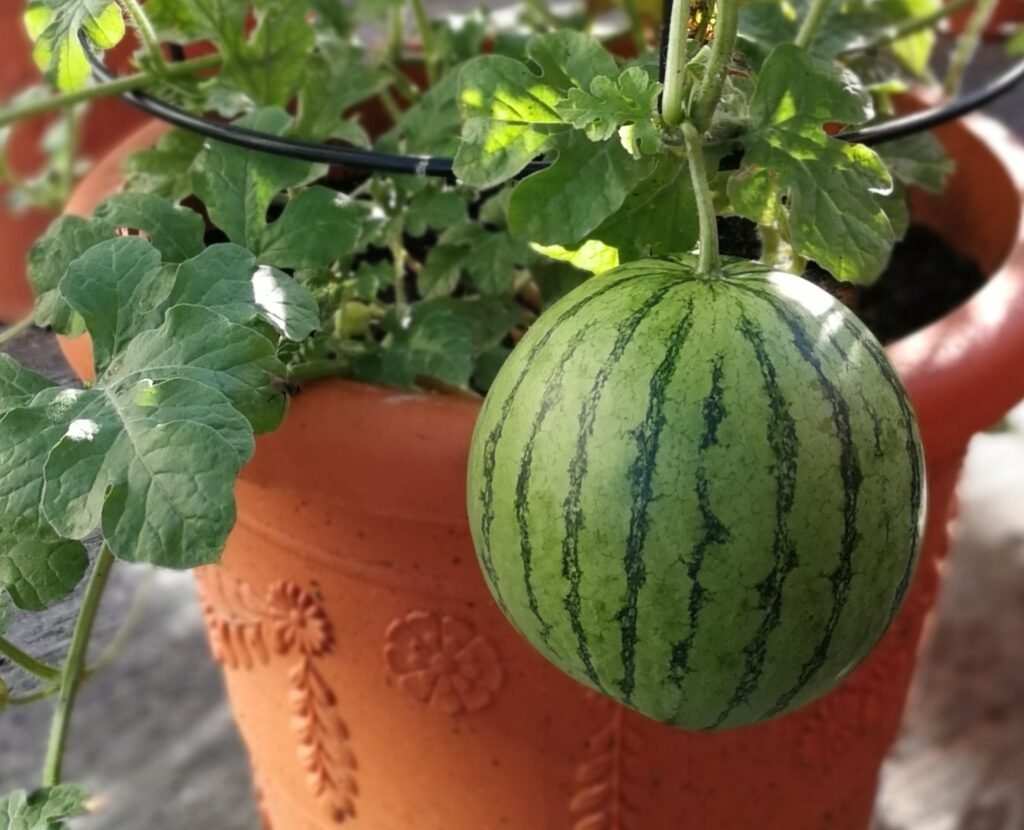
Choosing the Perfect Watermelon
- Check for a creamy yellow spot on the bottom.
- Look for uniform shape and firm rind.
- Avoid shiny or irregularly shaped fruits.
- Tap for a deep, hollow sound.
Storage Tips
- Whole watermelon: Store at room temperature for up to 2 weeks.
- Cut watermelon: Keep in an airtight container in the refrigerator for 3–5 days.
- Freezing: Dice and freeze watermelon for smoothies or popsicles.
Delicious Watermelon Recipes for American Kitchens
1. Classic Watermelon Salad
- Combine cubed watermelon, feta cheese, fresh mint, and a drizzle of balsamic glaze.
- Serve chilled as a refreshing summer salad.
2. Watermelon Smoothie
- Blend watermelon with strawberries, lime juice, and ice for a hydrating, sweet beverage.
3. Grilled Watermelon
- Lightly brush slices with olive oil and grill 2–3 minutes per side.
- Top with feta or arugula for a smoky-sweet twist.
4. Watermelon Salsa
- Dice watermelon, jalapeño, red onion, and cilantro.
- Add lime juice and salt. Perfect with grilled fish or chicken.
5. Watermelon Popsicles
- Blend watermelon, honey, and lime juice.
- Pour into molds and freeze for a kid-friendly summer treat.
Fun Facts About Watermelon
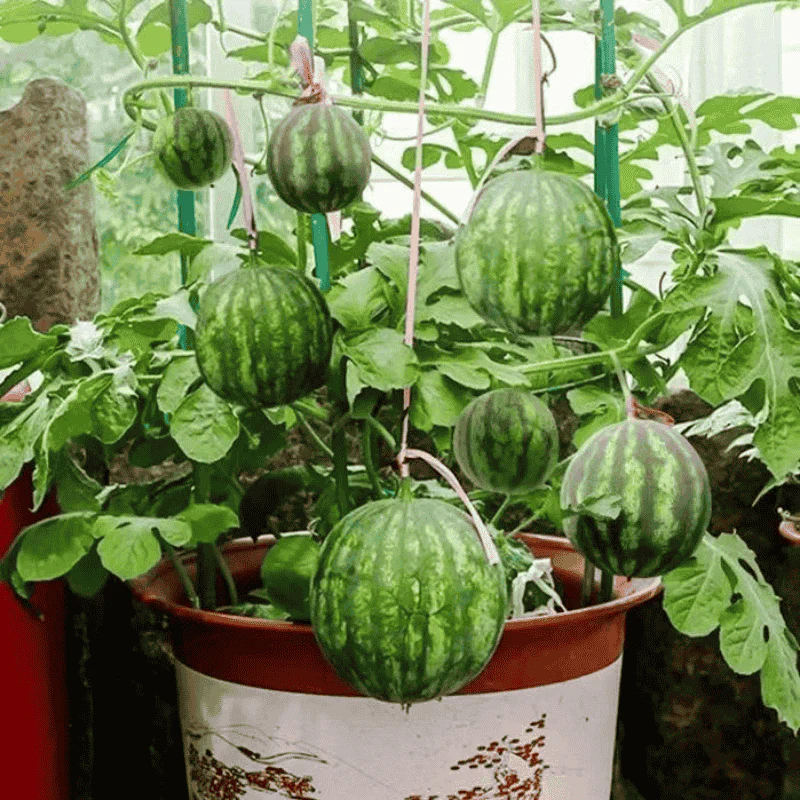
- America is one of the largest producers of watermelon, especially in California, Florida, Georgia, and Texas.
- Watermelon contains over 90% water, making it nature’s ultimate hydrating fruit.
- Botanically, watermelon is a fruit, but it’s also classified as a vegetable because it’s related to cucumbers and squash.
- Watermelon seeds are edible and packed with nutrients; roasting them provides a crunchy snack.
- Watermelon can vary in color: red, pink, yellow, and even orange-fleshed varieties exist.
Watermelon vs. Other Summer Fruits
| Fruit | Calories per 100g | Key Nutrient | Texture | Best Use |
|---|---|---|---|---|
| Watermelon | 30 | Lycopene & Vitamin C | Juicy, crisp | Salads, smoothies, grilling |
| Cantaloupe | 34 | Vitamin A & C | Soft, sweet | Salads, desserts, smoothies |
| Honeydew | 36 | Vitamin C & Potassium | Firm, smooth | Fresh snacking, smoothies |
| Pineapple | 50 | Vitamin C & Manganese | Fibrous, juicy | Desserts, grilling, drinks |
Watermelon stands out for its high hydration content, low calories, and refreshing taste, making it ideal for American summer lifestyles.
Conclusion: Why Watermelon Is America’s Summer Superstar
Watermelon isn’t just a fruit — it’s a summer tradition, a health booster, and a versatile culinary ingredient. Its benefits include:
- Hydration: Over 90% water keeps you cool and refreshed.
- Nutrition: Packed with vitamins, antioxidants, and minerals.
- Versatility: Perfect for salads, smoothies, desserts, grilling, and snacking.
- Gardening appeal: Easy to grow in warm climates with a high yield potential.
From backyard gardens to farmers’ markets and festive summer meals, watermelon is a fruit that Americans love and trust. Its sweet, juicy flavor and hydrating qualities make it an essential part of any summer celebration. Whether eaten fresh, blended into drinks, or grilled for a smoky twist, watermelon proves that nature’s sweetest fruits are often the simplest and most enjoyable.
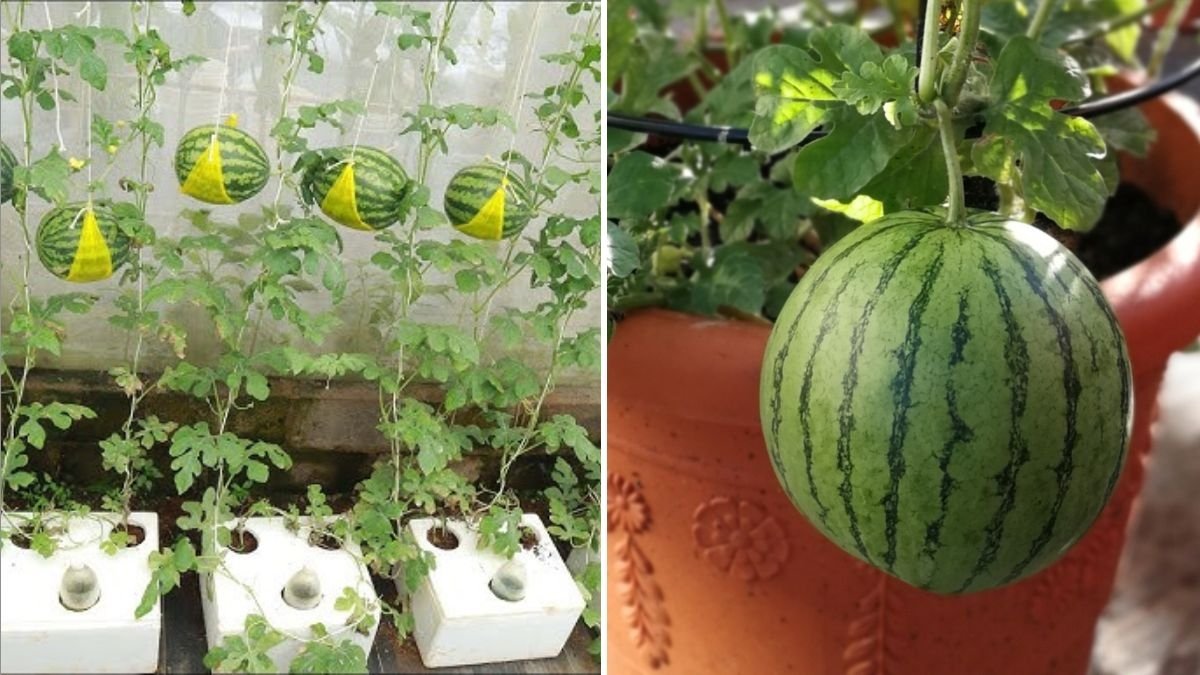




Leave A Comment